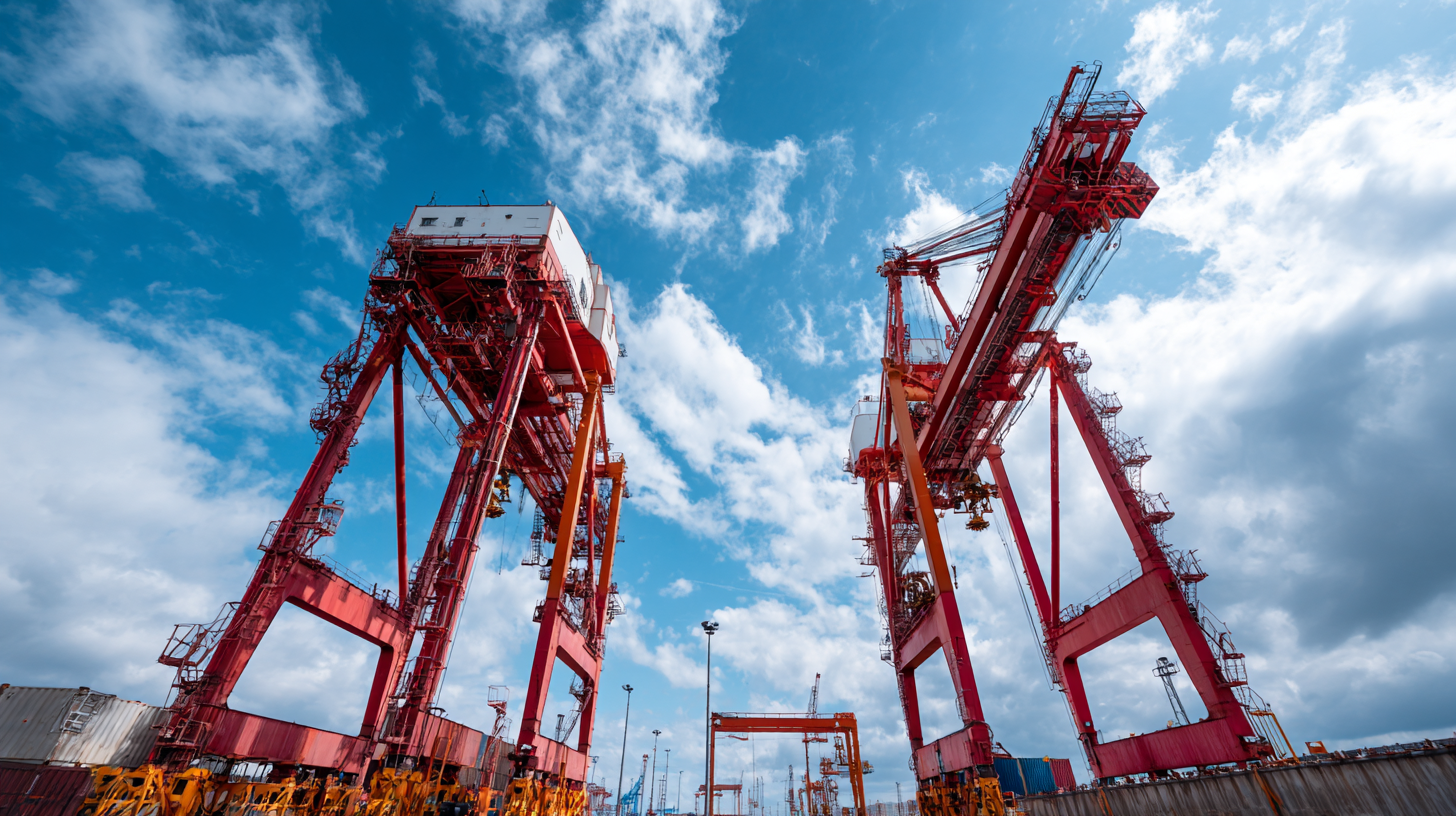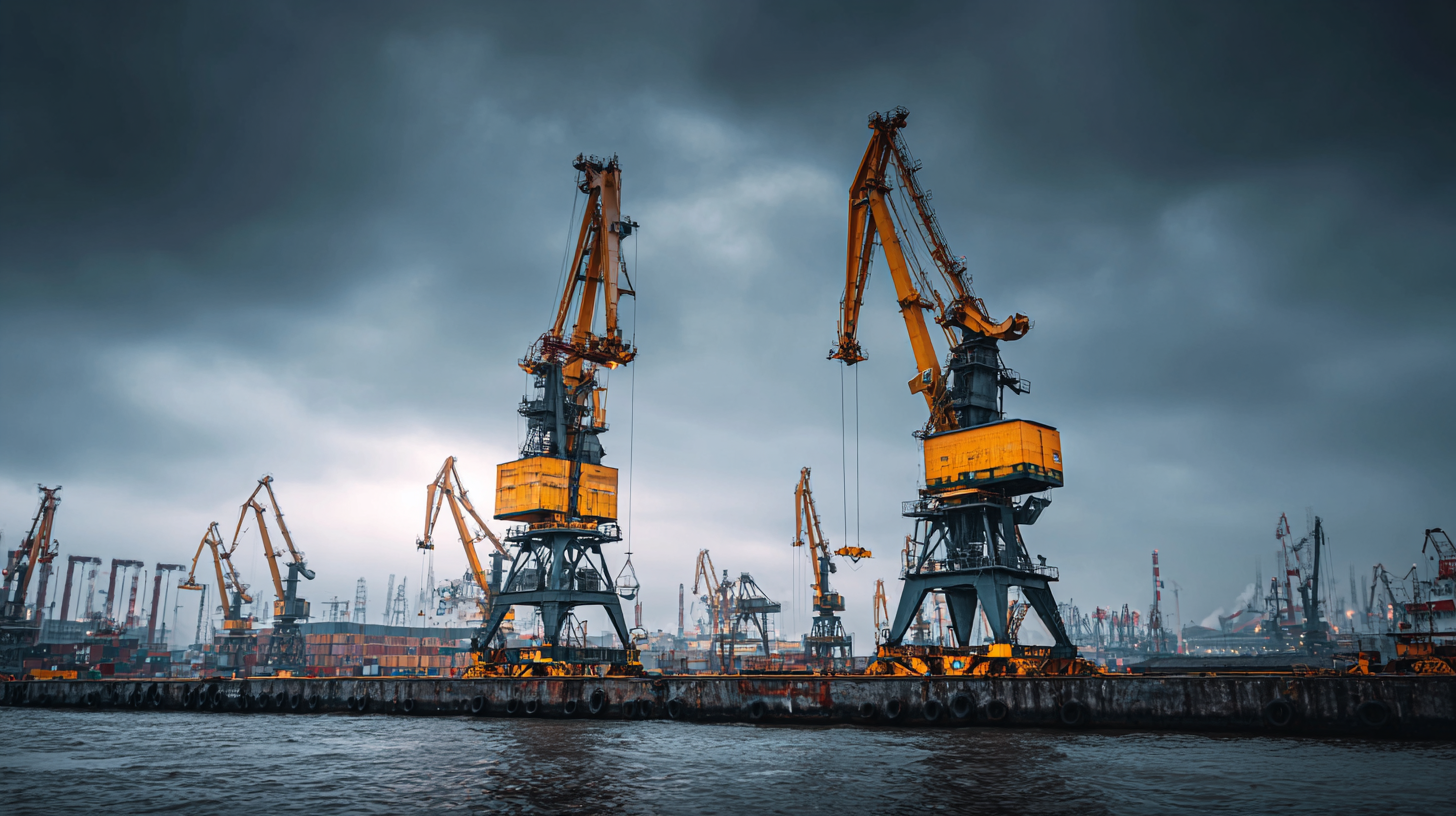Inquiry
Form loading...
-
Phone
-
Wechat

-
Whatsapp

As we look ahead to 2025, the landscape of Over Head Cranes is set to undergo a significant transformation fueled by technological advancements and evolving industry needs. According to the latest market report from MarketsandMarkets, the global overhead crane market is projected to reach USD 4.0 billion by 2026, growing at a CAGR of 4.5% during the forecast period. This growth is driven by the increasing demand for automation in material handling and the need for more efficient lifting solutions across various sectors, including construction, manufacturing, and logistics. Innovations such as IoT integration, advanced safety features, and enhanced energy efficiency are emerging as pivotal alternatives in crane design and functionality. In this comprehensive guide, we will explore these exciting upcoming innovations in Over Head Cranes, providing insights into how they will shape the future of industries reliant on heavy lifting.

The future of overhead cranes is poised for significant transformation by 2025, driven by key technological advancements that promise to increase efficiency, safety, and functionality. One of the most notable innovations is the integration of IoT (Internet of Things) technology, which enables real-time monitoring and data collection. This connectivity allows operators to track performance metrics and predict maintenance needs, thereby minimizing downtime and enhancing operational efficiency.
Another major development is the use of advanced materials and smart design. Lightweight yet durable materials such as carbon fiber and high-strength alloys are being utilized to construct cranes that are not only easier to maneuver but also have higher load capacities. Furthermore, automation and robotic systems are increasingly being incorporated, allowing for more precise control and reducing human error in lifting operations. As these technologies converge, the overhead crane industry is set to become more agile, creating safer and more productive work environments by 2025.

As the focus on environmental sustainability intensifies, the overhead crane industry is poised to embrace innovative green technologies. The adoption of eco-friendly materials in crane design not only reduces carbon footprints but also promotes a circular economy. By integrating advanced robotics and energy-efficient systems, manufacturers can create cranes that operate with minimal environmental impact while maintaining high productivity levels. Innovations such as regenerative braking systems and solar power integration are set to revolutionize overhead cranes, aligning them more closely with global sustainability goals.
Additionally, the concept of "greening" container terminals underscores the importance of sustainable practices in logistics and storage solutions. Innovative approaches, such as the development of eco-friendly reefer container storage systems, are emerging as practical alternatives to traditional methods. These environmentally conscious designs aim to optimize resource use, enhance energy efficiency, and reduce waste. As the industry shifts towards greener solutions, the implementation of these advancements not only contributes to environmental preservation but also offers cost-effective benefits, paving the way for a more sustainable future in overhead crane operations.
As we look towards 2025, the landscape of overhead cranes is poised for a radical transformation, particularly in the realm of safety features. One of the most significant advancements will be the integration of smart technology into crane operations. These innovations will not only monitor the load weight in real time but also assess environmental conditions, ensuring that operators are kept informed of any potential hazards. With the deployment of AI-driven analytics, operators can preemptively address safety concerns, significantly reducing the risk of accidents on job sites.
Moreover, the development of enhanced operator assistance systems will serve to revolutionize workplace safety. For instance, advanced features such as collision detection and automated emergency braking will be implemented in some of the most cutting-edge overhead cranes. These systems will help operators maintain optimal awareness of their surroundings while minimizing human error. Additionally, ergonomic controls designed with user comfort in mind will further contribute to the reduction of strain-related injuries, thereby fostering a safer working environment. As these innovations take shape, the future of overhead cranes will focus as much on safeguarding individuals as on improving efficiency and productivity.
The future of overhead cranes is set to be transformed through the integration of automation and artificial intelligence (AI). As industries strive for enhanced productivity and safety, these advanced technologies are emerging as vital components in crane design and operation. Automated systems can streamline lifting and material handling processes, minimizing human error and significantly reducing downtime. With AI algorithms, cranes can learn from operational data, adapt to different loads, and even anticipate maintenance needs, ensuring seamless operation and longevity.
Moreover, the role of sensors and IoT (Internet of Things) technology in overhead cranes cannot be overlooked. By embedding these systems, cranes can communicate in real-time with logistics and manufacturing software, making adjustments on the fly. This connectivity allows for optimized workflow and improved asset management.
As we approach 2025, it's clear that the evolution of overhead cranes will hinge on these intelligent solutions, propelling industries into a new era of efficiency, safety, and responsiveness. The combination of automation and AI not only enhances operational capabilities but also represents a shift towards a more interconnected, data-driven industrial landscape.
As we delve into the future of overhead cranes, it's essential to highlight how evolving market trends are shaping industry demands and driving innovation. In 2025, the need for enhanced efficiency and safety in various sectors, including manufacturing, construction, and logistics, is prompting manufacturers to rethink traditional designs. The integration of smart technology, such as IoT sensors and AI-driven analytics, will likely become standard features in cranes, allowing for real-time monitoring and predictive maintenance. These innovations not only aim to reduce downtime but also enhance load management and operational safety.

Moreover, sustainability is emerging as a key trend that influences crane design and functionality. Manufacturers are increasingly focusing on creating energy-efficient cranes that leverage renewable energy sources, addressing the growing environmental concerns within the industry. Coupled with the demand for automation, cranes equipped with advanced robotics and automated systems will revolutionize how materials are handled on job sites, significantly boosting productivity while lowering the carbon footprint. In essence, the landscape of overhead cranes is on the verge of a significant transformation, driven by these dynamic market trends and the relentless pursuit of progress.
